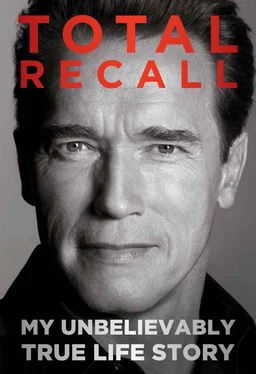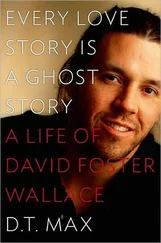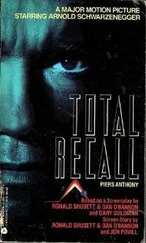We had some preliminary discussions, and I offered Susan the job. Before accepting, she came down to talk to Maria and me at our house as soon as I got back from China. The discussion covered a lot of issues, including what Susan would be up against in dealing with the Republicans on the staff. “I’ll do everything possible to avoid a bloodbath, which would just slow us down and damage your image even further,” she said. “But you have to give me the ability to recommend whatever changes need to be made. And if there’s a fight, you have to back me one hundred percent.”
“I’ll back you up; we’ll work on this together,” I promised.
Finally I asked her the question you always ask at the end of a job interview: “Do you have any questions for me?”
“Yeah,” she said. “What do you want your legacy to be as governor?”
I looked at her for a few seconds before I said anything. When you’re a governor, you get that question all the time. And I knew she was already aware of what my administration had achieved and what we were trying to do. But I thought this short, feisty woman might really want to know what I cared most about. “I want to build,” I said. “I want to see cranes everywhere.” We were soon going to have fifty million people in our population, and we didn’t have the roads, bridges, schools, water systems, communication systems, rail, or energy projects to be ready for that.
I got pretty animated talking about building, and then she got animated, and next the thing you knew, we were both hyperventilating about cranes, trains, highways, and steel. “I saw you on TV talking about that while you were in China!” she said. “You said we should be talking about a fifty-billion-dollar or one-hundred-billion-dollar bond measure—not Mickey Mouse stuff—and then your staff tried to walk that back down to something smaller. Well, that’s bullshit, and you were absolutely right!”
That’s when I knew we were going to click. Susan didn’t roll her eyes like so many people did when I started talking about infrastructure. She shared my view that the state had not scaled up its roads, bridges, dams, levees, and rails to match the growing population: it was living off the visionary investments of governors in the 1950s and 1960s who’d built highways and water projects and had helped nurture the state’s economy. As a result, we had a system built for a population of eighteen million rather than the fifty million who would be living in California by 2025. Susan didn’t balk at investing in projects that wouldn’t be completed until many years after we were out of office.
Instead of wrapping up the interview, I relit my cigar.
“No way California can go on like this,” Susan agreed.
“We need to rebuild in a big way,” I said.
“But in Sacramento, nobody thinks like that.”
That was true. I’d learned that for the politicians, it was all incremental. The rule of thumb in Sacramento was that you can’t have a bond issue over $10 billion because the voters will never approve double digits. That’s why the Democrats were talking about asking for $9.9 billion this year. And then they’d divvy it up among all the interest groups and say, “Two billion dollars for schools, two billion for highways, two billion for prisons,” and so on. Never mind that you couldn’t build anything with that!
Susan said that it bugged her to see my staff undermining me when I talked about big plans. In China, one of my aides had told reporters, “No, no, no. The governor didn’t really mean fifty billion or a hundred billion. He was just thinking out loud.”
She’d put her finger on something that had been eating at me: when I talked about my vision, I often felt like I was being humored. Not being taken seriously had been a big problem. I would say, “I want a million solar roofs,” and the staff would react like I was exaggerating for effect—as if maybe I meant only one hundred thousand solar roofs. But I did mean a million! California is a giant state; there was every reason to shoot for a million solar roofs.
I was often coming up with ideas only to be advised that they were too much, as well as the wrong thing politically. And up until now, I’d had nobody to bounce those big ideas off professionally, to shape and refine them and not simply dial them down. Susan likes to say that she thinks of me as the biggest engine in the world, and her job is to build a chassis that can hold together with the engine running at top speed. Now I had a partner.
Before I hired Susan, I made enough phone calls to know what the reaction was going to be. Not pretty. My choice blew a lot of minds, especially among my fellow Republicans. All they knew was that she was a Democrat and a former activist. They didn’t know she was a seriously pissed-off Democrat who wanted to see change.
Their standard reaction to my choosing Susan was “You can’t do that!” and I would reply, “I can. Of course I can. I can and I will.” A couple of times, I had to explain that even though her last name was Kennedy, she wasn’t a member of the Kennedy clan, and Teddy really wasn’t taking over the state. A few people even talked about drafting actor Mel Gibson, whose controversial movie The Passion of the Christ had been a big hit among religious conservatives, to run against me in the 2006 Republican primary.
The directors of the California Republican Party asked for a private meeting with me at the Hyatt Regency hotel across the street from the capitol. They demanded that I reconsider my choice. One of the party leaders insisted that Republicans wouldn’t work with me if I didn’t pick someone else. “We don’t trust her, and we won’t let her in our strategy meetings,” was the message. “So you’ll end up completely isolated.”
I told him he had to make decisions as a leader of the party, but I had to make decisions as a governor. It was my responsibility, not theirs, to select a staff. And I said I was confident that Republican legislators would cooperate with Susan because she was terrific.
She started unofficially just before Thanksgiving 2005. The first move that Susan made was really shrewd. Instead of starting by making personnel changes, she focused on the big goal of rebuilding the state. She called together the senior staff and told them to collect all the information they could find on expanding highways, water, housing, prisons, and classrooms. She asked them, What kind of California did we envision twenty years from now? And how much would it cost? Some objected to the idea as too ambitious, but Susan said, “I hear what you’re saying. But let’s suspend disbelief and just plan.”
The answers came back and added up to $500 billion. That was how much federal, state, local, public-private partnership, and private money we would need to build the California of 2025. Half a trillion dollars. The figure was so mind boggling, even for us, that we couldn’t work with it. So we cut the time frame to ten years and asked the staff to repeat the exercise. Now the number became $222 billion, of which the state contribution would be $68 billion in general obligation bonds. Those figures were still enormous. If California tried to borrow that much for construction, it would be by far the biggest bet on itself that the state had ever made. But we came up with a plan to spread the borrowing over the whole ten years. Then it became a manageable amount of debt. California leaders had abdicated responsibility for planning major investments, leaving big infrastructure projects to the whims of a handful of special-interest groups that would collect signatures and “sell” pots of bond money to those willing to help fund the campaign for the initiative. The result was that voters approved tens of billions of dollars in general obligation bonds over the years, most of which got spent on special-interest projects, and nothing valuable got built.
Читать дальше












